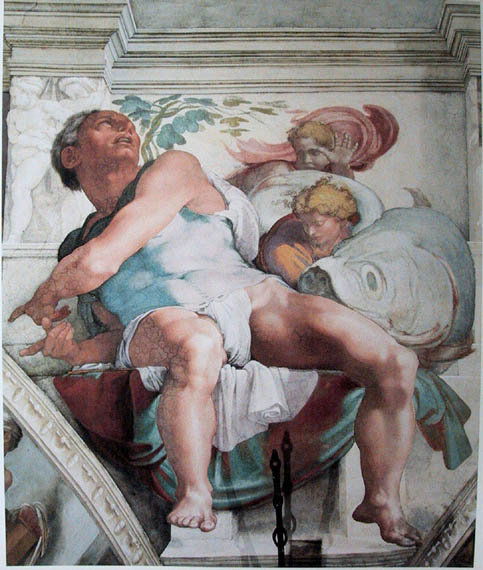Experiment Station readers may recall my recent post on Philip Guston in relation to Bob Dylan. Washington City Paper‘s subsequent pairing of that piece with another post on Guston by my colleague Brooke prompted me to consider a term from the Italian Renaissance, Difficulta. This expression referred to a practice of artists of the period to depict a scene of self-conscious complexity, so as to show the artist’s mastery of their craft. The example most often described in art history is Michelangelo’s portrayal on the Sistine Ceiling of the prophet Jonah moments after he has been disgorged by the whale. The representation of these awkward, writhing figures so that they would appear gracefully and beautifully rendered was a way of visually boasting and showing one’s artistic prowess.
What does this have to do with Guston’s art, particularly the Phillips’s current exhibition Roma? Well in short, Guston’s art is a 20th century version of difficulta, where the artist sets up deliberate challenges that he strove to overcome. Continue reading

